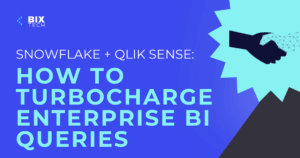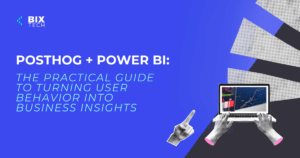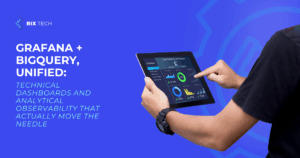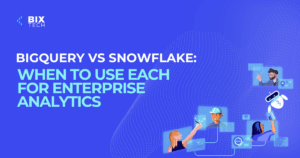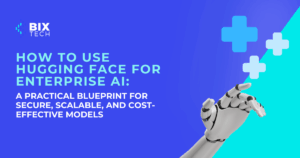Advanced Data Labeling Methods: From Hybrid Approaches to LLMs

Sales Development Representative and excited about connecting people
In the era of artificial intelligence and machine learning, high-quality labeled data remains the bedrock of any successful model. Yet, as datasets grow in complexity and scale, traditional labeling methods often fall short—either in accuracy, efficiency, or cost. Enter advanced data labeling methods, combining human expertise, automation, and, increasingly, Large Language Models (LLMs) to revolutionize how organizations prepare their data for AI-driven success.
Let’s dive into the latest strategies, real-world examples, and practical tips for mastering advanced data labeling—from hybrid human-in-the-loop workflows to cutting-edge LLM-powered annotation.
Why Data Labeling Matters More Than Ever
Before exploring advanced methods, it’s important to understand why data labeling is critical. Labeled data provides the “ground truth” for supervised learning tasks—everything from image classification and natural language processing to voice recognition. Poorly labeled data leads to underperforming models, wasted resources, and, ultimately, missed business opportunities.
As businesses increasingly rely on AI for decision-making, automation, and customer experiences, the pressure to create more accurate, scalable, and efficient data labeling pipelines is growing. For a deeper look into the critical importance of data in modern business, check out our guide on unleashing the power of Big Data.
Traditional Data Labeling: Strengths and Limitations
In the early days of AI, data labeling was a manual process, with teams of annotators tagging images, categorizing text, or transcribing audio. While this approach ensures accuracy (given proper training and quality checks), it doesn’t scale well for large datasets or evolving requirements.
Key challenges of manual labeling:
- Cost: Hiring and managing large annotation teams is expensive.
- Time: Labeling millions of data points can take months—or longer.
- Inconsistency: Human error and subjective interpretation can lead to mislabeled data.
These limitations have driven the adoption of more advanced, hybrid, and automated labeling techniques.
Hybrid Approaches: The Best of Both Worlds
Hybrid data labeling combines the precision of human annotators with the speed and scalability of automation. This “human-in-the-loop” strategy typically involves:
- Pre-labeling by Algorithms: Machine learning models or rule-based scripts label data automatically.
- Human Review: Annotators validate and correct the algorithm’s output, focusing only on uncertain or ambiguous cases.
- Iterative Improvement: Model retraining based on corrected labels, leading to continual performance gains.
Benefits of hybrid approaches:
- Efficiency: Algorithms handle the bulk of the work, freeing humans for edge cases.
- Consistency: Automated systems offer repeatable, unbiased labeling.
- Scalability: Organizations can process vast datasets without proportionally increasing headcount.
Real-World Example: Image Recognition in Healthcare
Consider a healthcare AI project to detect anomalies in X-ray images. A hybrid workflow might use a pre-trained model to label obvious cases, while radiologists review only those images with lower model confidence. This not only speeds up the process but also ensures that critical medical decisions are made with human oversight.
For more on how AI and automation are transforming industries, see our post on AI-driven innovations in software development.
Active Learning: Making Data Labeling Smarter
Active learning is an advanced strategy where models flag the most “informative” or uncertain samples for human labeling. Instead of labeling every data point, annotators focus on examples that will have the biggest impact on model performance.
How active learning works:
- Train an initial model on a small labeled dataset.
- Use the model to predict labels for the remaining data.
- Surface data points with the lowest confidence or highest uncertainty.
- Annotators label these challenging examples.
- Retrain the model with the new data, and repeat.
This approach can dramatically reduce labeling costs while accelerating model improvement.
LLM-Powered Data Labeling: A New Frontier
Large Language Models (LLMs) like GPT-4, Gemini, and open-source alternatives are reshaping the data labeling landscape. With their advanced natural language understanding, LLMs can automate many annotation tasks previously reserved for human experts.
Applications of LLMs in data labeling:
- Text Classification: LLMs can accurately categorize news articles, emails, or support tickets.
- Entity Recognition: Automatically extract names, locations, or product details from unstructured text.
- Sentiment Analysis: Labeling opinions in reviews, social media posts, or survey responses.
Advantages of LLM-Based Labeling
- Speed: Instantly label large volumes of text or even generate synthetic labeled data.
- Adaptability: LLMs can be fine-tuned for domain-specific tasks, improving accuracy.
- Cost-Effectiveness: Reduces reliance on large annotation teams.
Practical Considerations
While LLMs are powerful, they are not infallible. It’s crucial to build quality assurance mechanisms—such as random human audits, consensus checks, or using LLMs as part of a hybrid workflow—to catch errors and biases.
Combining Methods: The Future of Data Labeling
The most effective organizations don’t rely on a single labeling method. Instead, they blend strategies to create robust, adaptive pipelines. A typical advanced data labeling workflow might look like this:
- Automated Pre-labeling: Use models or LLMs for initial annotation.
- Active Learning Selection: Identify and prioritize uncertain cases.
- Human-in-the-Loop Review: Experts validate and correct edge cases.
- Continuous Monitoring: Quality assurance through random checks and feedback loops.
- Model Retraining: Regular updates with the latest, most accurate labels.
Best Practices for Advanced Data Labeling
- Define Clear Guidelines: Consistent labeling starts with well-documented instructions for both human and AI annotators.
- Invest in Annotation Tools: Modern platforms support versioning, collaboration, and integration with machine learning pipelines.
- Monitor Quality: Use metrics like inter-annotator agreement and spot checks to maintain high standards.
- Embrace Iteration: Treat data labeling as an ongoing process—improvements in labeling will continually benefit your AI models.
Conclusion: Powering the Next Generation of AI with Smarter Labeling
Advanced data labeling methods—from hybrid human-in-the-loop approaches to LLM-powered automation—are enabling businesses to scale AI solutions with unprecedented efficiency and accuracy. By thoughtfully combining people, processes, and technology, organizations can unlock the full potential of their data—and their AI investments.
Curious about how these approaches can give your business a competitive edge? Dive further into exploring AI PoCs in business and discover how to turn cutting-edge theory into impactful results.
Ready to supercharge your data annotation process? Start experimenting with hybrid and LLM-driven labeling approaches, and make your next AI project a success.




